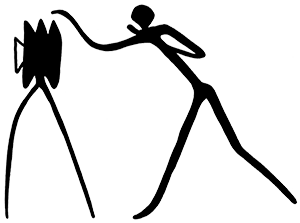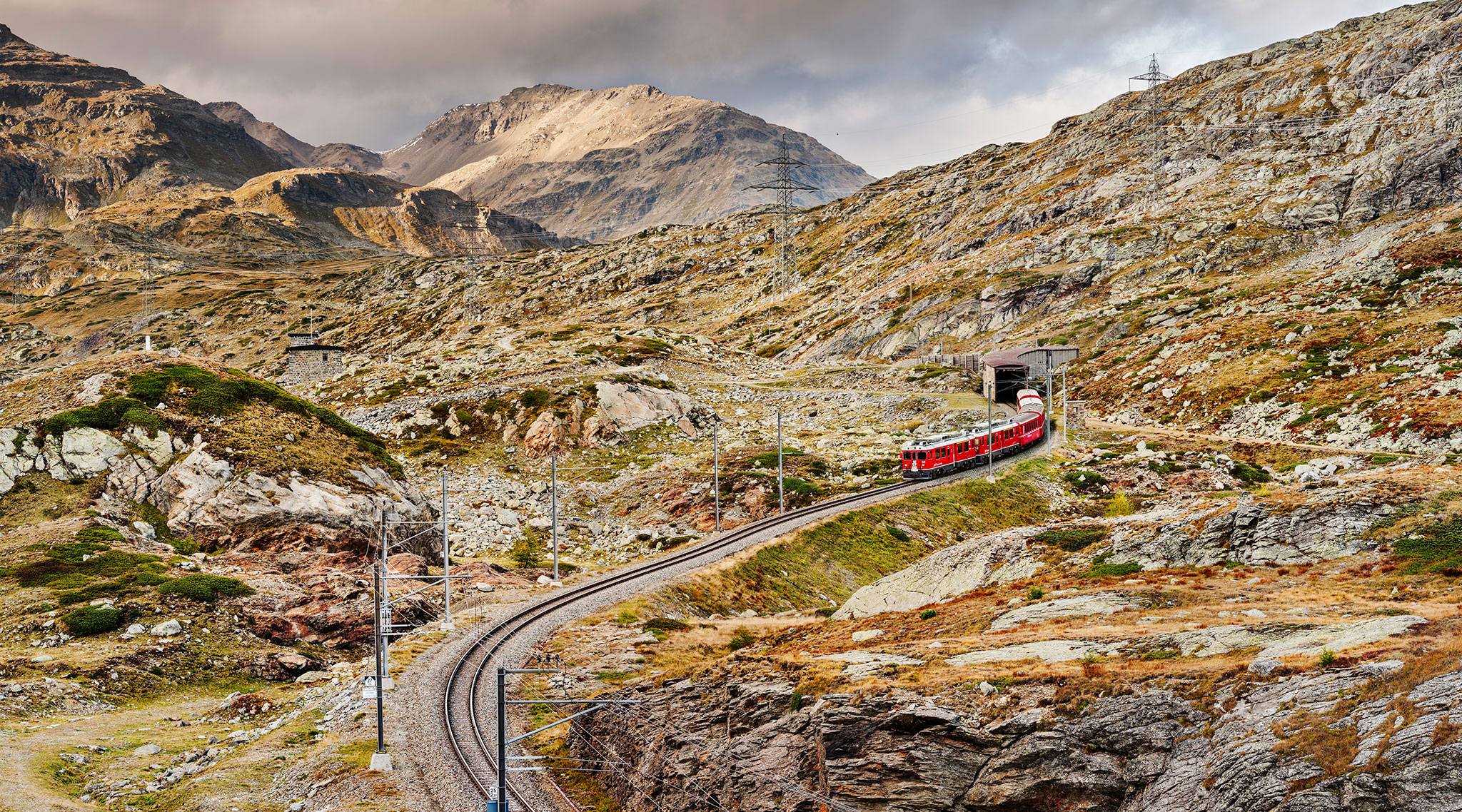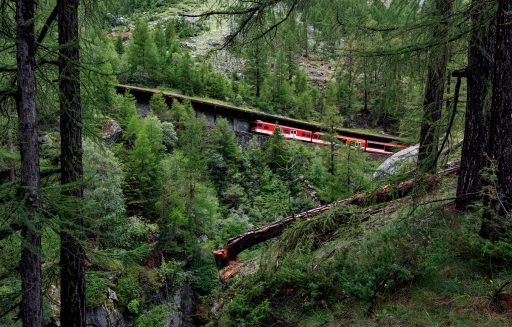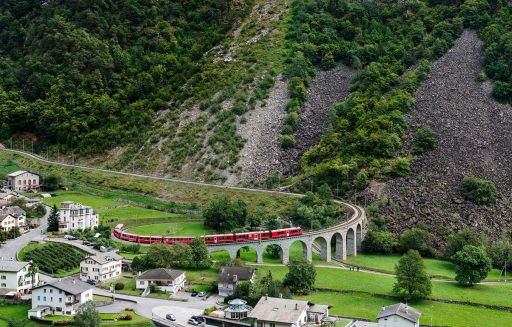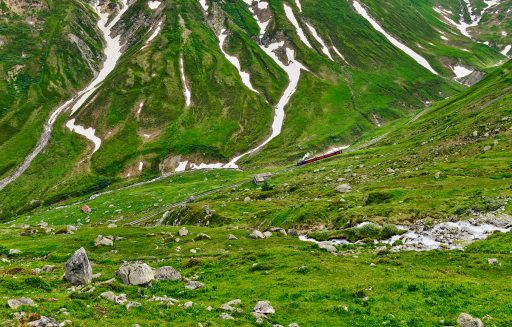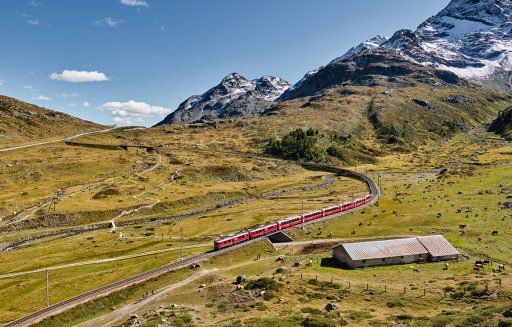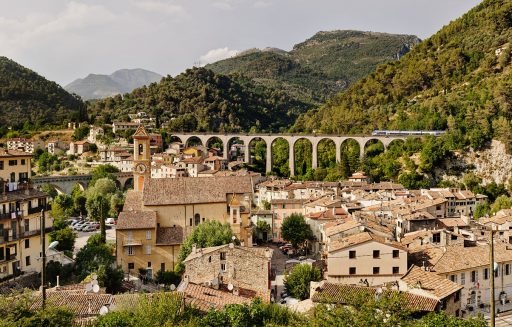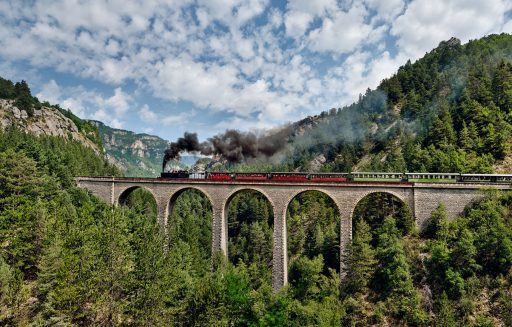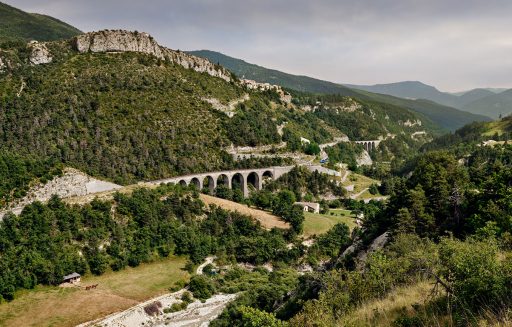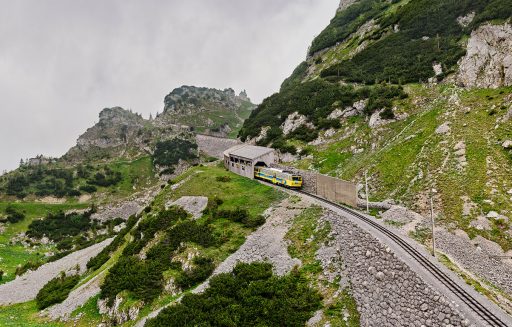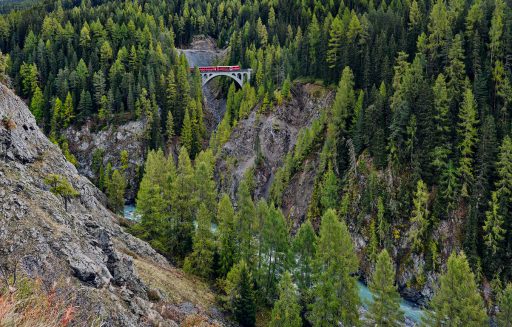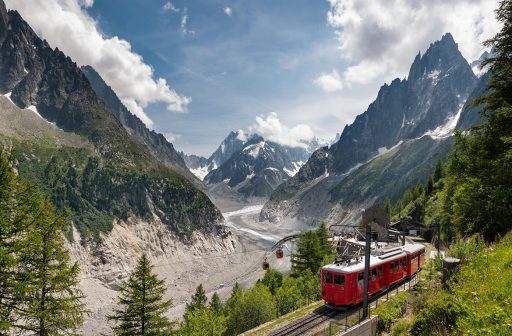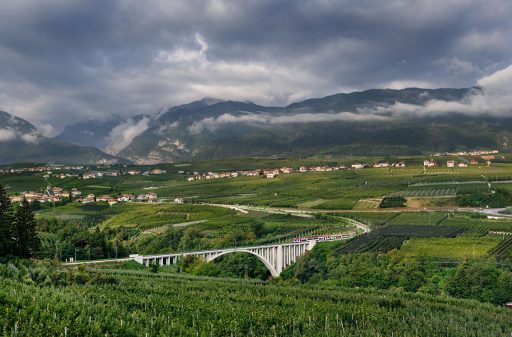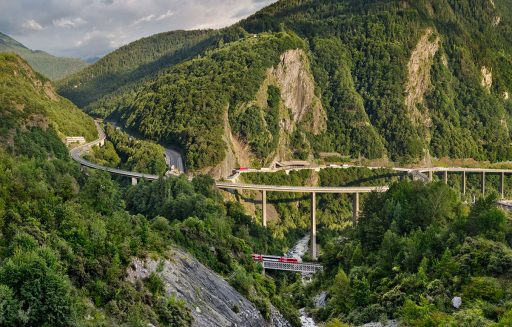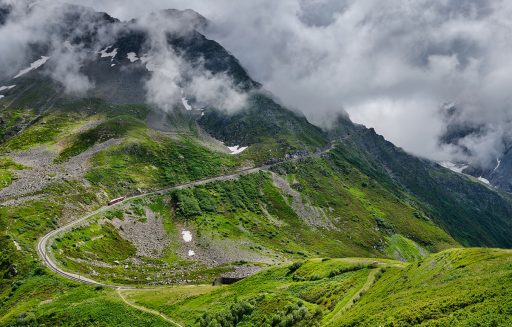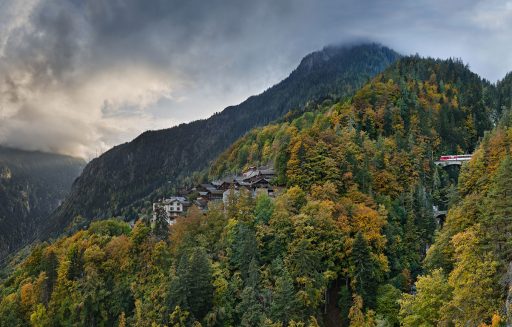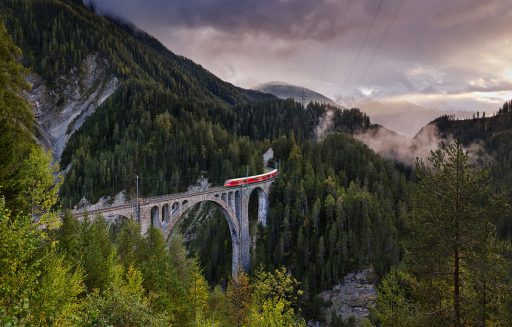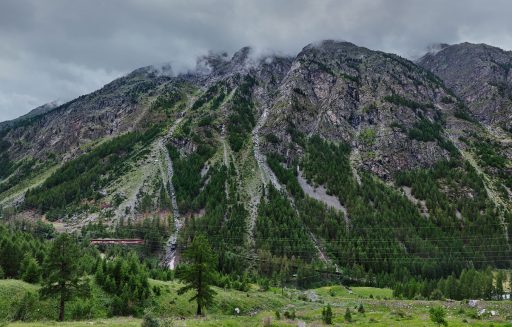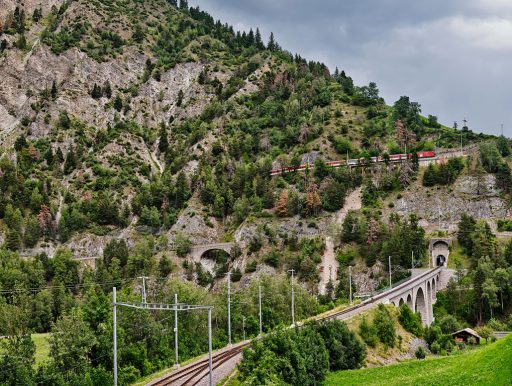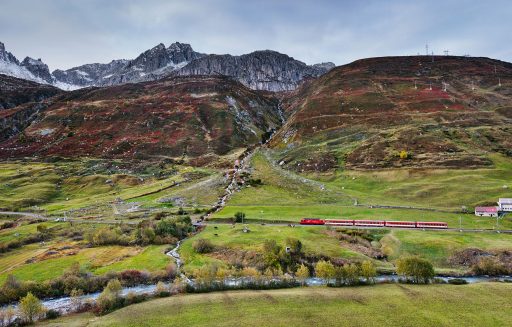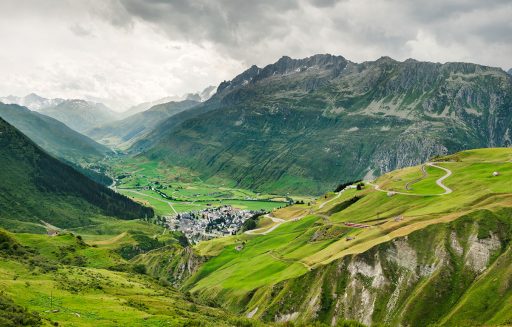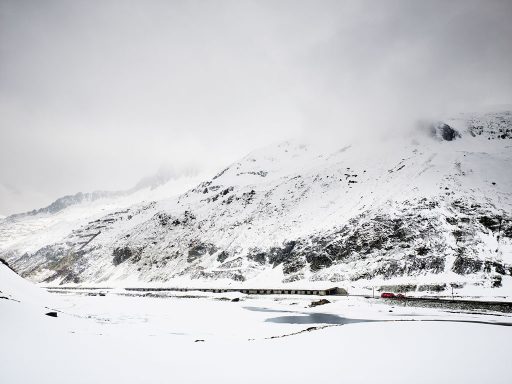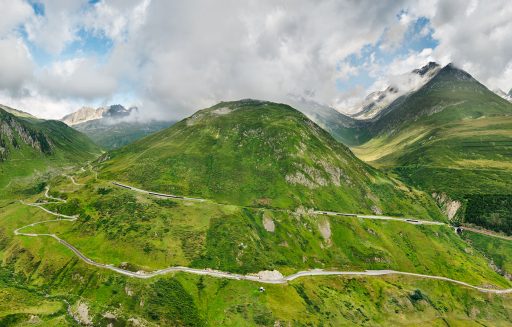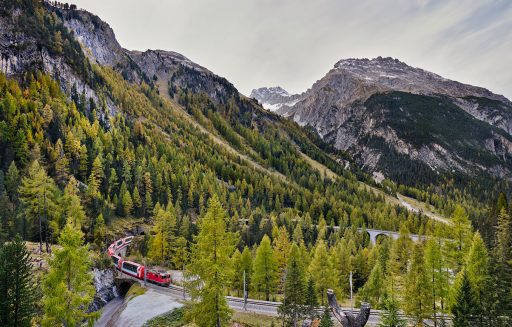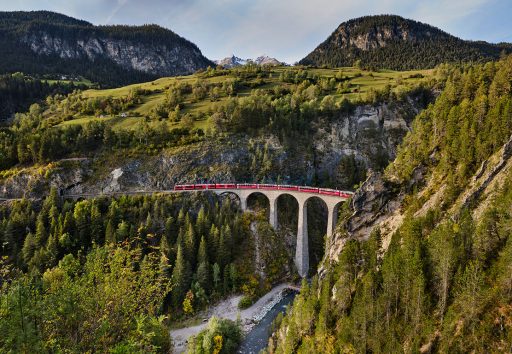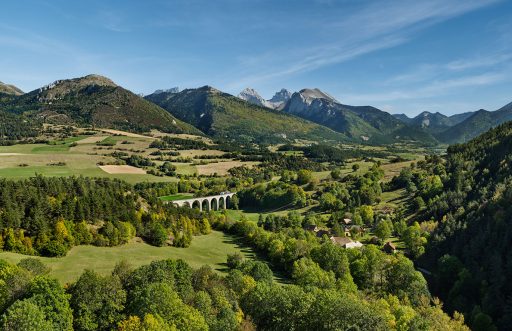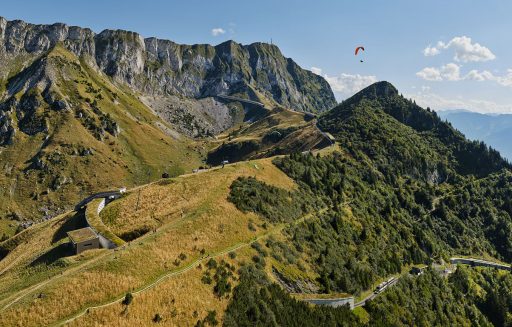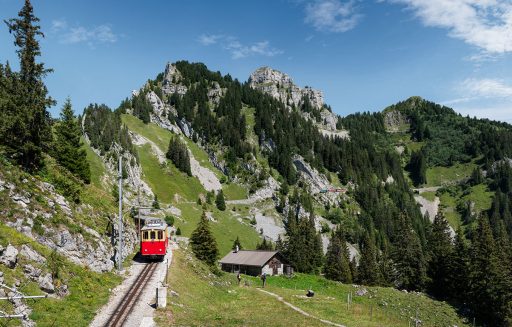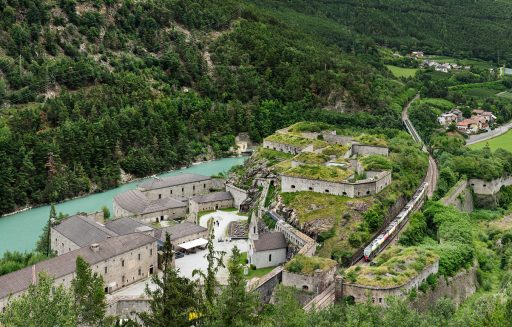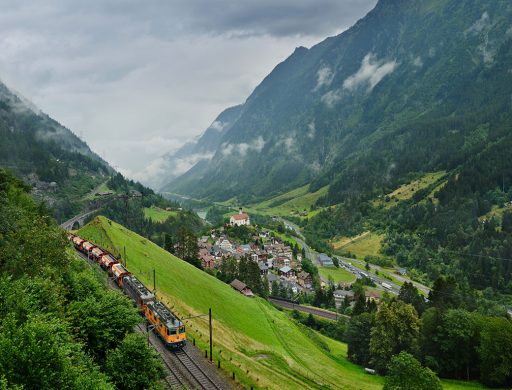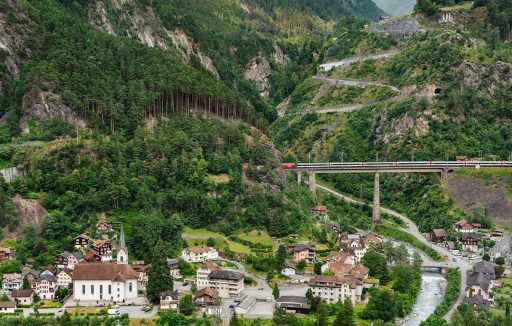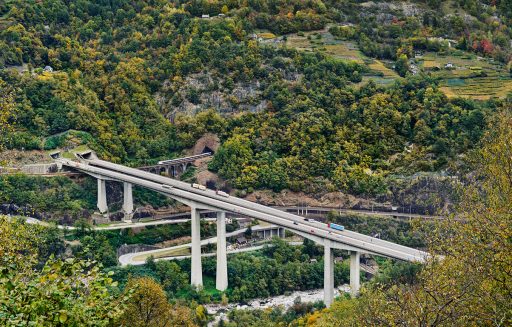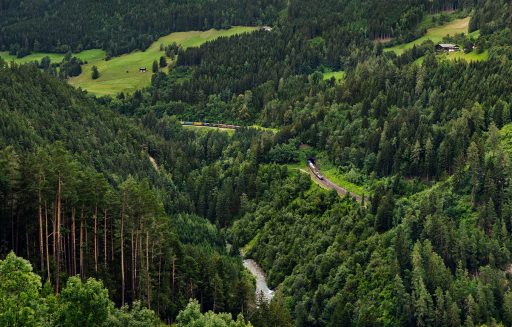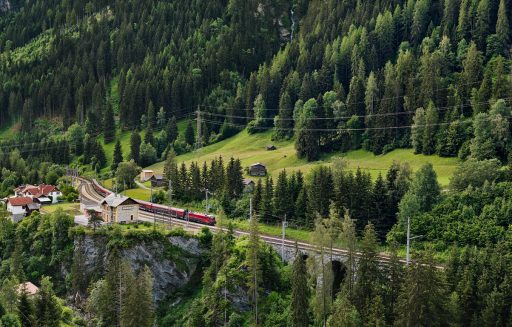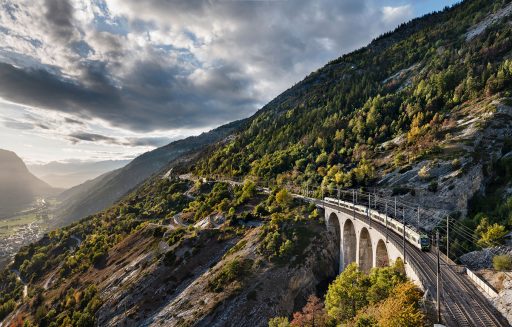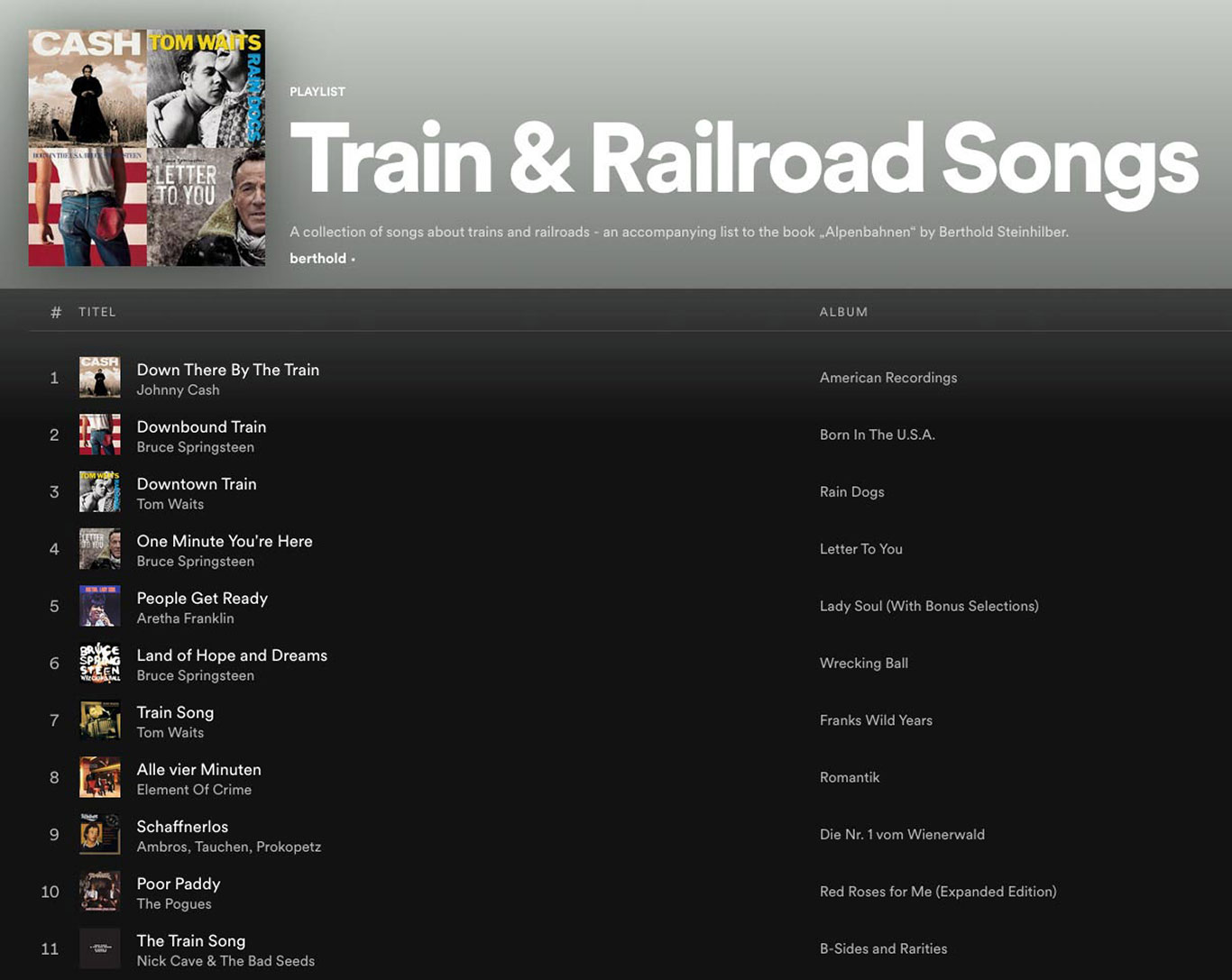Am Anfang des Buch steht ein Zitat des großartigen Musikers Tom Waits. Er hat das Lied für das erste „American Recordings“ Album (1994) von Johnny Cash geschrieben und später noch auf seiner eigenen Sammlung „Orphans: Brawlers, Bawlers & Bastards“ veröffentlicht.
Züge sind in diesem und den meisten Texten Metaphern auf das eigene Leben, Chancen auf ein anderes/besseres Leben, Freude, Abschied, Trauer, den Tod, Depression, Erlösung, Rettung, menschliche Gier etc.
Auf meinen Reisen in die Alpen habe ich mir immer ein Schwung Lieder aus meiner analogen Musiksammlung auf dem iPod mitgenommen und so entstand peu à peu eine Liste von Musikstücken zum Thema Zug und Eisenbahn, die ich hier gerne teilen will.
Es ist eine absolut persönliche Liste von Liedern, die mir sehr gut gefallen. Die Musikgeschichte hat dazu wirklich einige Schätze anzubieten.
Es ist kein Wunder, dass ich mir vor allem Stücke jener Musiker ausgesucht habe, die ich seit meiner Jugend höre und deren Lieder mich in so vielen Aspekten meines Lebens begleitet haben – und jetzt auch noch bei einem Buch über Eisenbahnen in den Alpen.
Natürlich haben diese Lieder mit dem eigentlichen Thema des Buchs der Alpenbahnen wenig zu tun, aber es geht schließlich in den Liedern mehr oder weniger um Züge und Eisenbahnen und das ist keine so schlechte Schnittmenge. Außerdem mögen die Lieder vielleicht mancher oder manchem gefallen und können zur Ergänzung des eigenen Musikgeschmacks einen kleinen Beitrag leisten, vielleicht jemanden sogar erfreuen. Wer weiß das schon und schaden kann es keinesfalls.
Tom Waits hat über zwei Dutzend Lieder über Züge geschrieben, Johnny Cash dutzende gesungen, Bruce Springsteen schöne Bilder gezaubert („… a freight train running through the middle of my head….“), die Cowboy Junkies eine wunderschöne Ballade über den Strukturwandel gesungen, Element of Crime das wortgewandteste deutschsprachige Lied zu diesem Thema geschrieben und das Trio Ambros-Tauchen-Prokopetz die schönste deutschsprachige Ballade gesungen.
Besonders die melancholischen Songs begeistern mich immer wieder – ich kann mich diesen traurigen Liedern begnadeter Interpreten wie Marianne Faithfull, Van Morrison oder the Eels kaum entziehen. Einer meiner liebsten Stücke zum Thema sind die sagenhaften Instrumentalstücke von Warren Ellis, Michael Nyman, Brian und Roger Eno, Steve Reich und dem Kronos Quartet sowie last but not least Kraftwerk.
Nicht fehlen dürfen die Klassiker von Duke Ellington, Ella Fitzgerald, Aretha Franklin und Glenn Miller und die vielen Stücke aus der Blues-Geschichte (u.a „Love in Vain“ interpretiert von den Rolling Stones oder dem „Mystery Train“).
„Princess of the Night“ ist heute ein Klassiker des Heavy Metal Genre, allerdings ist das Lied der britischen Band Saxon keine Hymne auf eine verführerische Schönheit der Nacht, sondern auf die Eisenbahn.
Aber manchmal ist die Eisenbahn eher Nebensache, beschreibt eine Szenerie und davon sind mir schöne Bilder in Erinnerung geblieben („Waterloo Sunset“ der Kinks, das Intro von „Berlin“ der Band Ideal, „Ohio“ von Low Anthem oder „Kindling“ von Elbow).
Zusammengekommen ist eine Liste von gut 300 Liedern und man braucht fast einen Tag um sie anzuhören. Der digitalen Einfachheit halber habe ich dafür eine eigene Spotify Playlist angelegt. Leider sind die Songs von Neil Young aus bekannten Gründen nicht mehr über den Anbieter zu hören. Aber „Southern Pacific“ und „Train of Love“ gehören ganz nach oben in meiner Sammlung.
Eine ausführliche Liste über Train Songs gibt es bei Wikipedia und es lohnt sich sehr, dort weiter nachzuforschen.
Ich erinnere mich sehr gut an einen Samstagvormittag im Sommer 2019 oben am Oberalppass bei Andermatt, als der Wind die Klänge von Alphornbläser zu mir rübergetragen hatte und ich mir dachte, das klingt doch wie eine Hommage an diese schöne Bahnstrecke. Vielleicht gibt es das schon irgendwo?
Wenn Sie noch Stücke kennen, v.a. aus dem nicht-englischen Raum, dann schreiben Sie mir sehr gerne eine email.
At the beginning of the book is a quote by the great musician Tom Waits. He wrote the song for Johnny Cash’s first „American Recordings“ album (1994) and later released it on his own collection „Orphans: Brawlers, Bawlers & Bastards“.
Trains in this and most lyrics are metaphors on one’s own life, chances for a different/better life, joy, sorrow, death, depression, farewell, redemption, salvation, human greed, etc.
On my journeys to the Alps, I always took a pile of songs from my analogue music collection on my iPod and so, little by little, a list of music pieces on the theme of trains and railways emerged, which I would like to share with you.
It is an absolutely personal list of songs that I like extremely well. Music history really has some treasures to offer.
It is no wonder that I have mainly chosen pieces by those musicians whom I have been listening to since my youth and whose songs have accompanied me in so many aspects of my life – and now also in a book about railways in the Alps.
Of course, these songs have little to do with the actual subject of the book about Alpine Railways, but after all, the songs are more or less about trains and railways and that’s not that bad.
Besides, the songs might appeal to some and can make a small contribution to complementing one’s own musical taste, maybe even please someone. Who knows, and it certainly won’t hurt.
Tom Waits has written over two dozen songs about trains, Johnny Cash sang dozens, Bruce Springsteen conjured up beautiful images („… a freight train running through the middle of my head….“), the Cowboy Junkies sang a beautiful ballad about structural change, Element of Crime wrote the most eloquent German-language song on this subject and the trio Ambros-Tauchen-Prokopetz sang the most beautiful German-language ballad.
Especially the melancholic songs always inspire me – I can hardly escape these sad songs by gifted performers like Marianne Faithfull, Van Morrison or the Eels. One of my favourite pieces on the subject are the fabulous instrumentals by Warren Ellis, Michael Nyman, Brian and Roger Eno, Steve Reich and the Kronos Quartet, and last but not least Kraftwerk.
Not to be missed are the classics by Duke Ellington, Ella Fitzgerald, Aretha Franklin and Glenn Miller and the many pieces from the history of Blues Music (including „Love in Vain“ interpreted by the Rolling Stones or „Mystery Train“).
„Princess of the Night“ is a classic of the heavy metal genre, but the song by the British band Saxon is not a hymn to a seductive beauty of the night, but to the railway.
But sometimes the railway is more of a minor matter, describes a scenery or a beautiful impression has stayed with me („Waterloo Sunset“ by the Kinks, the intro of „Berlin“ from the band Ideal, „Ohio“ by Low Anthem or „Kindling“ by Elbow).
I’ve come up with a list of about 300 songs, and it takes you nearly a day to listen to them.
For the sake of digital simplicity, I created my own Spotify playlist. Unfortunately, for reasons best known, Neil Young’s songs are no longer available there. But „Southern Pacific“ and „Train of Love“ belong at the top of my collection.
There is also a detailed list of Train songs on Wikipedia and it is very worthwhile to investigate further there.
I remember very well one Saturday morning in Summer 2019 up on the Oberalp Pass near Andermatt, when the wind carried the sounds of alphorn players over to me and I thought to myself, that sounds like a tribute to this beautiful railway line. Maybe it already exists somewhere?
If you know of any pieces, especially from the non-English-speaking world, please feel free to send me an email.
